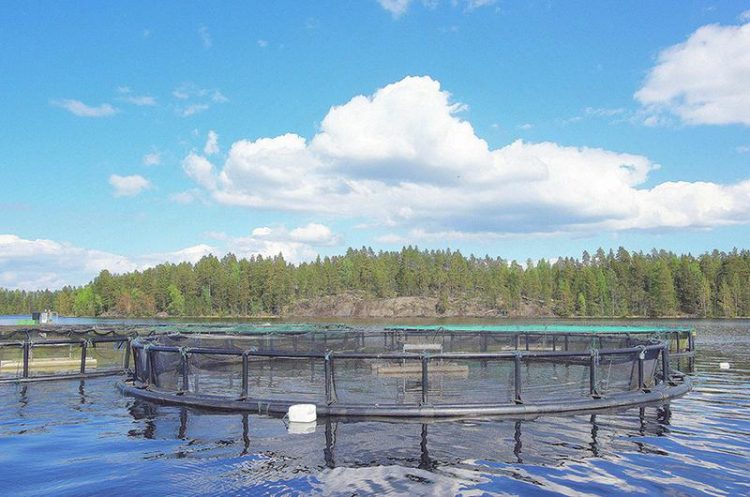Aquaculture: Clear Water Thanks to Cork

Aquaculture provides a way out of this dilemma; already today it provides more than half of the fish consumed worldwide.
Overfishing of the world's oceans is a global problem. Politics, economy, society – all of them are required to search for a solution for increasing worldwide demand for fish in the face of dwindling resources. This issue arose again recently, when EU fisheries ministers passed a noticeable reduction of the cod fishing quotas in the Baltic Sea in order not to further endanger the stocks.
The enormous pressure on wild fish stocks must be reduced. Aquaculture provides a way out of this dilemma; already today it provides more than half of the fish consumed worldwide. With an annual growth of eight percent, this industry is a future market, but one that wants to and must permanently check and improve environmental and quality standards.
Therefore, a re-thinking is currently necessary. For feeding fish in aquaculture, both in the ocean as well as in limnic waters, can have negative consequences for water quality. This is the central point from which the Fisheries Research Station of the Baden-Wuerttemberg Agricultural Center starts. The experts at this institute have developed a food additive that is very well-suited for production in aquaculture.
This invention solves a main problem of fish production: the pollution of the water with fecal material. For polluted water causes illnesses and growth problems in fish, harms the environment, and especially endangers the system stability of modern closed systems.
The special feature of this newly-developed fish food is the addition of cork. Tiny cork particles are added to the food; these remain undigested, enriching the excrement so that it floats to the surface of the water, where it can be removed in quantity quite easily. The cork additive is not harmful to fish and at the same time it is environmentally-friendly since the fish excrement collected this way can be used directly as fertilizer. Filter systems in aquaculture are loaded less heavily and cleaning cycles can be extended significantly.
The food is also suitable for use in aquaponic systems, because the excrement can then be used for fertilizing plants with little additional work.
The patents for these inventions have been granted in Norway, Denmark, France, Great Britain, and Germany. The patent has been registered in Canada and Chile. The Technologie-Lizenz-Büro (TLB) GmbH is in charge of the commercial implementation of these future-orientated technologies on a global level and offers companies opportunities for cooperation and licensing.
For further information, please contact: Anne Böse (boese@tlb.de).
http://www.technologie-lizenz-buero.com/en/news/article-view/article/aquakultur-…
Media Contact
All latest news from the category: Life Sciences and Chemistry
Articles and reports from the Life Sciences and chemistry area deal with applied and basic research into modern biology, chemistry and human medicine.
Valuable information can be found on a range of life sciences fields including bacteriology, biochemistry, bionics, bioinformatics, biophysics, biotechnology, genetics, geobotany, human biology, marine biology, microbiology, molecular biology, cellular biology, zoology, bioinorganic chemistry, microchemistry and environmental chemistry.
Newest articles

A universal framework for spatial biology
SpatialData is a freely accessible tool to unify and integrate data from different omics technologies accounting for spatial information, which can provide holistic insights into health and disease. Biological processes…

How complex biological processes arise
A $20 million grant from the U.S. National Science Foundation (NSF) will support the establishment and operation of the National Synthesis Center for Emergence in the Molecular and Cellular Sciences (NCEMS) at…

Airborne single-photon lidar system achieves high-resolution 3D imaging
Compact, low-power system opens doors for photon-efficient drone and satellite-based environmental monitoring and mapping. Researchers have developed a compact and lightweight single-photon airborne lidar system that can acquire high-resolution 3D…





















